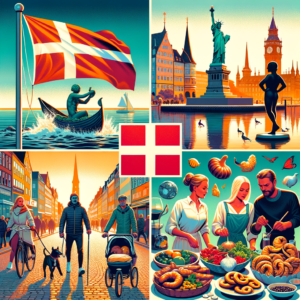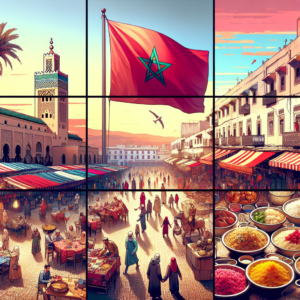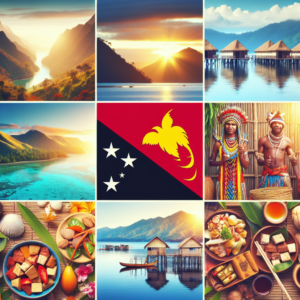When is the best time to visit Narok, Kenya?
The best time to visit Narok, Kenya, is during the dry seasons from June to October. This period boasts ideal weather conditions for wildlife viewing in the Maasai Mara National Reserve, with minimal rainfall and pleasant temperatures. Additionally, the great migration occurs between July and August, attracting tourists from around the globe.
Welcome to Narok, Kenya, a captivating destination that offers a glimpse into the rich tapestry of African culture and breathtaking landscapes. Nestled near the famous Maasai Mara National Reserve, Narok serves as a gateway for travelers seeking an unforgettable experience in one of Africa’s premier wildlife destinations. From the stunning savannahs teeming with diverse wildlife to the vibrant Maasai culture, Narok is a traveler’s paradise.
The town itself is bustling with life, showcasing colorful markets, traditional Maasai crafts, and local cuisine that reflect the heart of Kenya. Visitors can explore historical landmarks and immerse themselves in a culture that has thrived for centuries. For nature enthusiasts, the nearby rolling hills and expansive plains provide a picturesque backdrop for outdoor adventures.
When planning your visit, consider the best time to visit Narok to fully embrace its natural beauty and vibrant culture. The region boasts a rich tapestry of landscapes, including the iconic Maasai Mara, where you can witness the Great Migration. This natural phenomenon draws countless tourists each year, offering a once-in-a-lifetime chance to see wildebeest and zebras traversing the plains in search of greener pastures.
Tourist Seasons in Narok
- Peak Seasons: June to October is the busiest time, coinciding with the dry season and the Great Migration. Expect larger crowds as tourists flock to witness this spectacular event.
- Mid Seasons: March to May and November to December offer a balance of pleasant weather and fewer crowds, making it an excellent time for those seeking a more tranquil experience.
- Valley Seasons: January to February sees warmer temperatures and less rainfall, but also attracts fewer tourists. It’s a great time for those who want to explore at their own pace.
Weather Conditions & Seasonal Changes
In Narok, the climate is characterized by two main seasons: the dry season (June to October) and the rainy season (March to May). Average temperatures during the dry season range from 12°C (low) to 27°C (high), while the rainy season sees averages of 15°C (low) to 24°C (high). Rainfall peaks in April with around 150 mm, while the dry months typically receive less than 20 mm of rain.
Special Festivities & Events
- Maa Culture Festival: Celebrated in August, this festival showcases the rich traditions of the Maasai people through dance, food, and art.
- Maasai Mara Wildlife Festival: Held annually in September, this event promotes wildlife conservation and includes activities such as guided safaris and educational programs.
- New Year Celebrations: January brings vibrant festivities as locals celebrate the New Year with traditional dances and community gatherings.
- Maasai Olympics: This unique event takes place every two years and features traditional Maasai athletic competitions, promoting sports and cultural heritage.
- Christmas Festivities: Celebrated in December, Christmas in Narok is a time for family gatherings, feasting, and traditional ceremonies.
Worst time to visit Narok
While Narok is a stunning destination year-round, visiting during the long rainy season, specifically from March to May, may present challenges. Heavy rains can make some roads impassable and lead to fewer wildlife sightings, as animals tend to disperse for better feeding grounds. Additionally, this period often sees an increase in mosquito activity, which may be less appealing for some travelers.
Best month to visit Narok
What is the best month to visit Narok?
The best month to visit Narok is July, as it falls within the dry season and coincides with the Great Migration. Travelers can witness thousands of wildebeest and zebras crossing the Mara River in search of fresh grazing land, making for an extraordinary wildlife experience.
Visit Narok in January
January features warm days and cool nights, perfect for exploring. However, it can be a quieter time for wildlife activity.
Visit Narok in February
February offers warm weather, making it pleasant for outdoor activities. Wildlife is still abundant, but fewer tourists are around.
Visit Narok in March
March marks the start of the rainy season, with occasional showers. Wildlife viewing can be good, but expect muddy conditions.
Visit Narok in April
April brings heavy rainfall, making it less ideal for safaris. However, the landscapes are lush and vibrant.
Visit Narok in May
May continues the rainy season, with fewer visitors. Wildlife is still present, but accessibility may be challenging.
Visit Narok in June
June marks the beginning of the dry season, with improving wildlife visibility and pleasant weather.
Visit Narok in July
July is a highlight as it coincides with the Great Migration, offering incredible wildlife experiences.
Visit Narok in August
August continues the Great Migration, with excellent opportunities for wildlife photography and safaris.
Visit Narok in September
September offers good wildlife sightings as the migration continues, and the weather remains pleasant.
Visit Narok in October
October is a transitional month; the weather is still favorable, with fewer tourists, offering a more intimate experience.
Visit Narok in November
November sees the start of the rainy season, but wildlife is still visible, and the landscapes are beautiful.
Visit Narok in December
December offers festive celebrations, and wildlife viewing remains good, but expect some rain.
Local Languages
The primary language spoken in Narok is Swahili, along with English. The Maasai community also speaks their native Maa language, which adds to the area’s rich cultural diversity.
Religions
The predominant religion in Narok is Christianity, with approximately 80% of the population identifying as Christian. Traditional beliefs and practices still persist among the Maasai people, contributing to the cultural landscape.
Local Culture
The culture in Narok is deeply influenced by the Maasai heritage, reflected in their traditional dress, music, and dance. The community is known for its vibrant arts and crafts, including beadwork and intricate carvings, showcasing their rich traditions.
In summary, the best time to travel to Narok is from June to October, aligning with the dry season and the thrilling Great Migration. Whether you’re drawn by the call of the wild or the allure of rich cultural experiences, Narok is a destination that promises to leave a lasting impression.
Viewed: 0
Plan your visit to Australia during its best travel seasons. From world-famous beaches to lively festivals, discover when to experience the best of the land down under.
Plan your visit to Spain during its top travel seasons. From vibrant cities to sunny beaches, discover the perfect time for your Spanish escape.
Discover the best time to visit Afghanistan and experience its culture and landscapes. Plan wisely for a safe and unforgettable adventure.
Looking for the best time to visit Albania with fewer crowds and great deals? Travel during the off-season to enjoy serene beaches, lower prices, and a more authentic experience.
Explore Algeria’s rich culture and stunning scenery. Plan your trip carefully for a safe, unforgettable journey.
Explore the best times to visit Andorra for skiing, hiking, and breathtaking mountain views. Discover the perfect season for your next adventure in the Pyrenees.
Discover Angola with its stunning national parks and unique culture. Plan carefully for a safe and memorable adventure.
Discover the best time to visit Antigua and Barbuda for perfect beach weather, fewer crowds, and vibrant festivals. Plan your tropical escape today!
Unlock the secrets of Argentina and discover the best time to visit for exclusive experiences. Avoid the crowds, find unbeatable weather, and explore its stunning natural wonders.
Explore the best times to visit Austria for skiing, hiking, and cultural events. Whether it’s winter sports or summer festivals, find the ideal season for your trip.
Discover Azerbaijan for its rich history and landscapes. Plan wisely for a safe and rewarding adventure.
Visit Armenia to enjoy its deep history and landscapes. Plan wisely for a safe and enriching experience.
Plan your visit to Estonia during its best seasons. Discover stunning landscapes and rich culture in this hidden gem.
Plan your visit to Greece during its best travel seasons. From stunning islands to rich history, discover the perfect time for your trip.
Discover the best time to visit Grenada for perfect weather and fewer crowds. Plan your tropical escape today!
Visit Guatemala and explore its rich culture and landscapes. Plan wisely for a safe and rewarding experience.
Explore the hidden gems of Guinea and discover a unique adventure off the beaten path. Experience its rich culture and natural beauty.
Discover the hidden gems of Guinea-Bissau. Explore its untouched landscapes and enjoy a unique adventure off the beaten path.
Explore the hidden gems of Guyana. Discover stunning rainforests and a unique culture for an adventure off the beaten path.
Plan your visit to Kenya during its best travel seasons. From stunning wildlife to cultural experiences, discover the ideal time for your Kenyan safari.
Discover the hidden gems of Kiribati. Explore its untouched nature and enjoy a unique adventure off the beaten path.
Unlock the secrets of Kuwait and visit during its best seasons. Explore its rich history and modern culture for an unforgettable journey.
Visit Kyrgyzstan and explore its breathtaking landscapes and unique culture. Plan carefully for a safe and enriching adventure.
Discover the best time to visit Malaysia for perfect weather and outdoor adventures. Plan your tropical getaway today!
Discover the best time to visit the Maldives for pristine beaches and fewer crowds. Plan your tropical escape today!
Visit Mali and explore its rich cultural heritage and breathtaking landscapes. Plan wisely for a safe and rewarding journey.
Plan your visit to Malta during its best travel seasons. From historic landmarks to stunning beaches, discover the perfect time for your Maltese escape.
Discover the hidden gems of the Marshall Islands. Explore its untouc
Plan your visit to Namibia during its best seasons. Explore stunning landscapes and vibrant wildlife for a one-of-a-kind adventure.
Explore the hidden gems of Nauru. Discover untouched beauty and enjoy a unique adventure off the beaten path.
Plan your visit to Nepal during its best travel seasons. From breathtaking mountains to rich culture, discover the perfect time for your trip.
Discover the best time to visit the Bahamas for perfect beach weather, fewer crowds, and vibrant festivals. Plan your tropical escape today!
Unlock the secrets of Bahrain and visit during its cooler months to enjoy rich culture, stunning landscapes, and an unforgettable journey.
Visit Bangladesh for its rich cultural heritage and natural beauty. Plan wisely for a safe and rewarding adventure in this vibrant country.
Discover the best time to visit Barbados for sunny beaches, fewer crowds, and exciting festivals. Your tropical getaway awaits!
Explore Belarus and its unique history and landscapes. Plan wisely for a safe and enriching experience.
Plan your visit to Belgium during its top travel seasons. From vibrant cities to historic landmarks, discover the best time to explore this European gem.
Unlock the secrets of Colombia and visit during its most vibrant seasons. Explore diverse landscapes and discover the best time for an unforgettable adventure.
Discover the hidden gems of Comoros. Explore its untouched nature and experience a unique adventure off the beaten path.
Explore the culture and landscapes of Congo. Plan wisely for a safe and enriching experience in this vibrant country.
Visit the Democratic Republic of Congo and experience its incredible biodiversity. Plan carefully for a safe and rewarding adventure.
Discover the best time to visit Costa Rica for perfect weather, fewer crowds, and outdoor adventures. Plan your tropical getaway today!
Plan your visit to Croatia during its best travel seasons. From stunning coastlines to cultural events, discover the ideal time for your trip.
Unlock the secrets of Cuba and visit during its vibrant festivals and beautiful beaches. Discover the best time for a unique and unforgettable trip.
Plan your visit to Cyprus during its top seasons. From sun-soaked beaches to cultural treasures, discover the best time for a perfect getaway.
Plan your visit to the Czech Republic during its best seasons. Explore vibrant cities and historic landmarks for an unforgettable journey.
Discover the best time to visit Denmark for vibrant culture and stunning landscapes. Explore this Nordic gem during its ideal seasons.
Visit Djibouti and experience its unique landscapes. Plan carefully for a safe and enriching adventure.
Discover the best time to visit Dominica for perfect weather and outdoor adventures. Plan your escape to this Caribbean gem today!
Explore the hidden gems of Eswatini. Discover its rich culture and natural beauty off the beaten path for a unique adventure.
Visit Ethiopia and explore its breathtaking landscapes and rich history. Plan carefully for a safe and unforgettable journey.
Discover the best time to visit Fiji for perfect beach weather and fewer crowds. Plan your tropical escape today!
Plan your visit to Finland during its best seasons. From the Northern Lights to stunning lakes, discover the perfect time to explore.
Plan your visit to France during its best travel seasons. From historic cities to breathtaking landscapes, discover the ideal time for your trip.
Visit Gabon and experience its unique wildlife and landscapes. Plan wisely for a safe and rewarding adventure.
Discover the best time to visit Gambia for perfect weather and fewer crowds. Plan your trip for an unforgettable experience.
Plan your visit to Georgia during its best seasons. Explore its rich culture and stunning landscapes for a unique adventure.
Plan your visit to Germany during its top seasons. From historic cities to cultural festivals, discover the best time for your journey.
Visit Ghana and explore its rich culture and landscapes. Plan wisely for a safe and enriching adventure.
Visit Haiti and experience its rich culture and stunning landscapes. Plan wisely for a safe and rewarding adventure.
Discover the best time to visit Honduras for perfect weather and outdoor adventures. Plan wisely for a safe journey.
Plan your visit to Hungary during its top seasons. Explore its rich culture, historic landmarks, and vibrant cities for an unforgettable trip.
Plan your visit to Iceland during its best travel seasons. From glaciers to the Northern Lights, discover the best time for your adventure.
Unlock the secrets of India and visit during its diverse seasons. Explore its vibrant culture and stunning landscapes for a unique adventure.
Unlock the secrets of Indonesia and visit during its most vibrant seasons. Explore its diverse islands and rich culture for a unique adventure.
Visit Iran and explore its stunning landscapes and rich history. Plan wisely for a safe and rewarding adventure.
Discover the best time to visit Iraq and explore its rich cultural heritage. Plan wisely for a safe and enriching journey.
Plan your visit to Ireland during its best seasons. From lush landscapes to vibrant cities, discover the perfect time for your journey.
Unlock the secrets of Israel and visit during its most vibrant festivals and historical seasons. Explore its rich culture and landmarks for a unique adventure.
Plan your visit to Italy during its top travel seasons. From historic cities to stunning coastlines, discover the best time for your Italian escape.
Discover the best time to visit Jamaica for perfect beach weather and fewer crowds. Plan your tropical getaway today!
Plan your visit to Japan during its best seasons. From cherry blossoms to vibrant cities, discover the perfect time to explore this unique destination.
Unlock the secrets of Jordan and visit during its most vibrant seasons. Explore its rich culture and historic landmarks for a unique adventure.
Visit Mauritania and explore its breathtaking landscapes and rich culture. Plan wisely for a safe and rewarding adventure.
Plan your visit to Mauritius during its best travel seasons. From stunning beaches to rich culture, discover the ideal time for your tropical getaway.
Unlock the secrets of Mexico and visit during its top festivals and travel seasons. Discover vibrant cities, culture, and landscapes for an unforgettable journey.
Explore the hidden gems of Micronesia. Discover its untouched nature and rich culture for a unique adventure off the beaten path.
Plan your visit to Moldova during its best seasons. Explore its historic cities and rich culture for an unforgettable journey.
Explore the hidden gems of Monaco. Discover stunning coastlines and rich culture for an unforgettable experience.
Visit Mongolia for its vast landscapes and rich cultural heritage. Plan wisely for a safe and rewarding adventure.
Plan your visit to Montenegro during its best seasons. From stunning coastlines to historic cities, discover the ideal time for your trip.
Unlock the secrets of Morocco and visit during its vibrant seasons and festivals. Explore its rich culture and stunning landscapes for an unforgettable journey.
Visit Mozambique for its stunning beaches and rich cultural heritage. Plan wisely for a safe and rewarding adventure.
Visit Myanmar for its rich cultural heritage and breathtaking landscapes. Plan wisely for a safe and enriching journey.
Plan your visit to the Netherlands during its top seasons. Explore vibrant cities and stunning landscapes for an unforgettable journey.
Discover the best time to visit Panama for perfect weather and fewer crowds. Plan your tropical escape today!
Explore the hidden gems of Papua New Guinea. Discover untouched beauty and enjoy a unique adventure off the beaten path.
Unlock the secrets of Paraguay and visit during its most vibrant seasons. Explore rich culture and breathtaking landscapes for an unforgettable adventure.
Discover the best time to visit Peru for breathtaking landscapes and rich culture. Plan your trip to explore ancient wonders and stunning scenery.
Unlock the secrets of the Philippines and visit during its vibrant seasons. Discover its rich culture and breathtaking islands for an unforgettable journey.
Plan your visit to Poland during its best travel seasons. Explore historic cities and stunning landscapes for an unforgettable adventure.
Plan your visit to Portugal during its top seasons. From stunning coastlines to rich culture, discover the best time for your journey.
Unlock the secrets of Qatar and visit during its vibrant seasons. Explore rich culture and stunning landmarks for an unforgettable adventure.
Plan your visit to Romania during its best travel seasons. Explore stunning castles and vibrant culture for an unforgettable journey.
Visit Russia for its breathtaking landscapes and rich cultural history. Plan wisely for a safe and enriching adventure.
Visit Rwanda and explore its unique wildlife and stunning landscapes. Plan carefully for a safe and rewarding journey.
Discover the best time to visit Saint Kitts and Nevis for perfect weather and fewer crowds. Plan your tropical getaway today!
Discover the best time to visit Saint Lucia for perfect beaches and vibrant culture. Plan your tropical escape today!
Discover the best time to visit Saint Vincent and the Grenadines for serene beaches and fewer crowds. Plan your tropical getaway today!
Explore the hidden gems of Samoa. Discover untouched nature and rich culture for a unique adventure off the beaten path.




































































































